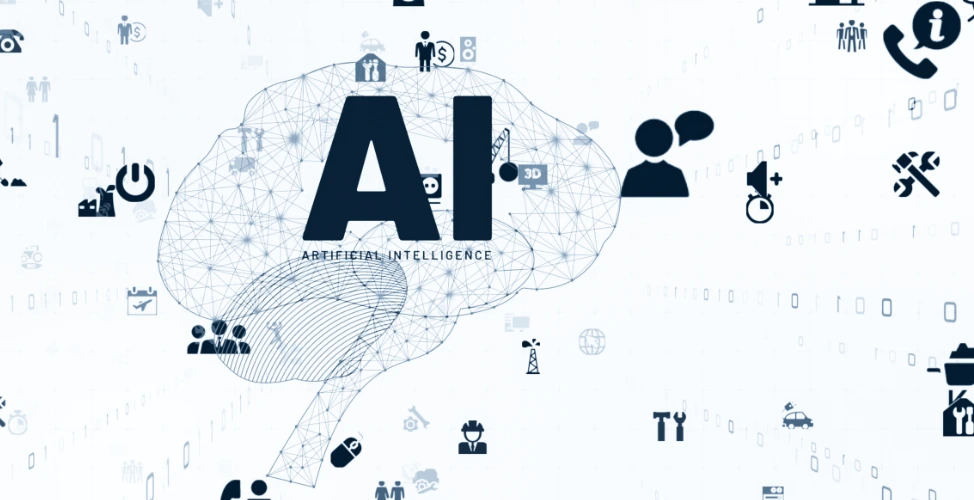July 19, 2021
10 Proven Strategies to Accelerate AI Adoption in Your Enterprise
Looking for real traction with AI adoption? Tired of pilot projects that never scale? This guide from SmartOSC goes past the buzz, sharing strategies that work for real businesses. Let’s discover what actually moves the needle for organizations ready to take the next leap.

Understanding AI Adoption in the Enterprise
What is AI Adoption?
AI adoption means moving artificial intelligence out of the lab and into everyday business. It’s not just about picking a trendy tool or buying software licenses. True adoption means putting AI into real workflows, empowering teams, and turning data into action.
It starts with a business goal, not just curiosity. Think of using AI in HR to speed up onboarding or in customer service to answer support tickets. When AI delivers value, adoption sticks.
Why is AI Adoption Important?
The benefits are hard to ignore. Organizations embracing AI can:
- Accelerate decision-making at every level, from routine approvals to big strategic shifts
- Cut repetitive tasks that drain time and focus, letting teams handle creative work instead
- Improve customer experiences through smart automation, quick responses, and personalized support
- Spot patterns that people miss, shining a light on hidden risks and untapped opportunities
- Elevate accuracy across departments, shrinking errors and reducing costly mistakes
- Respond to fast-changing market needs in real time, not days later
Agentic AI is driving major breakthroughs across supply chain management, digital marketing, analytics, finance, and customer service by replacing manual tasks with intelligent automation. While many businesses experience rapid efficiency gains, true success doesn’t come from simply adopting new tech. It requires clear strategic goals, committed leadership, and an enterprise-wide mindset ready to harness the full potential of agentic AI.
Current Trends in AI Adoption
AI adoption is moving fast across the enterprise space, and the pace just keeps picking up speed. New research paints a clear picture: companies are no longer just dipping a toe in. Most are jumping in with both feet.
According to TechTarget’s 2025 report, 72% of enterprises have explored AI within the last year. That’s a big jump from just under 50% five years ago.
While sales, marketing, and IT have often grabbed the spotlight as early adopters, the story is shifting. HR, finance, and legal teams are getting into the game and finding ways to make AI work for them, too.
The buzz around AI is everywhere, but getting meaningful results isn’t always a straight shot. Behind the scenes, the teams that see progress share a few things in common:
- Peer-driven learning takes the lead. People copy what works for colleagues, not what’s written in a manual.
- Small wins build confidence and momentum, even if the first attempts don’t look like big wins on paper.
- Ongoing feedback loops allow companies to refine projects and adapt quickly if something’s not working.
- Direct engagement matters more than top-down mandates. Teams who own the process tend to find real value.
When adoption works, it’s rarely due to a single tech investment. Instead, it comes from an attitude that says, ‘let’s experiment and share what we learn.
See more: How to Choose the Right Agentic AI Platform for Your Business
10 Proven Strategies to Accelerate AI Adoption in Your Enterprise
Now we break down the playbook that works, using proven steps, real-life examples, and practical guidance from teams that have seen success firsthand. We explore what separates companies that move fast and build traction from those that stall out after the pilot phase.
1. Develop an Enterprise-Wide AI Strategy and Governance Framework
Success starts with a clear plan. Set goals, assign responsibilities, and map out where you want AI to move the needle. Smart companies set up a governance group or AI Center of Excellence to keep the mission on track. Businesses that invest early in digital transformation and strategy tend to see faster, more sustainable results.
For example, a leading U.S. federal agency teamed up with experts to create an AI strategy from scratch. They mapped out risks, set ethical guardrails, and defined ownership, so no one was left guessing. The result? Faster buy-in, smoother projects, and real results.
2. Start with Low-Risk Pilot Projects
No need to bet the farm right away. The smartest teams pick small, low-risk pilots that show quick returns. HR automation, invoice scanning, or customer chatbots work well.
At WestRock, the audit team tried generative AI on simple reporting tasks before rolling it out across their workflow. Success in the small stuff built trust and revealed what worked without risking big budgets or business continuity.
3. Engage Diverse Stakeholders from the Start
AI isn’t an IT-only show. Bring in people from across the business: operations, legal, finance, customer service, and beyond. When everyone has a seat at the table, adoption moves faster.
One law firm put their junior lawyers in charge of AI proof-of-concept projects. The move sparked ‘buy-in’ from across the company. Even the skeptics turned into advocates once they saw the benefits for themselves.
4. Upskill and Involve the Workforce
Formal training programs are good, but peer-to-peer learning and ‘try it yourself’ culture drive real change. Employees want to learn on their own terms.
Research shows most staff prefer asking colleagues, testing features hands-on, or swapping tips in informal forums. Think less ‘classroom’ and more ‘coffee chat’. The payoff? Faster, stickier learning and no eye rolls at yet another onboarding video.
5. Establish Secure and Controlled AI Environments
Security isn’t just IT’s headache. Every team needs safe spaces to experiment, test, and refine AI tools. A secure sandbox or test bed lets employees try things out without risk. Keeping cyber security top of mind during every pilot and rollout builds trust and reduces roadblocks.
WestRock’s IT department created a secure playground for their internal audit team to explore GenAI. That safety net let users experiment, fail safely, and build real trust in the technology.
6. Create an Internal Knowledge Hub
Don’t let AI knowledge stay hidden. Build a resource hub packed with use cases, policies, quick-start guides, and upcoming events. Make it easy to share lessons learned and repeat successes.
Digital commerce and application development projects thrive when everyone can share lessons learned and repeat successes.
7. Promote Peer-Led AI Adoption
Change spreads faster through peers, not top-down memos. Identify and support early adopters. Let them coach, cheerlead, and troubleshoot for others.
At one agency, an AI Community of Interest brought together enthusiasts and skeptics for monthly sessions. They swapped scripts, compared results, and even challenged AI outputs, sometimes just for fun. The group turned resistance into curiosity, and curiosity into action.
8. Align AI with Business Outcomes
It’s easy to chase shiny objects. The best teams tie every project back to business value. What pain does it solve? Who benefits? How will you measure success?
At ASUS Singapore, AI-powered audience insights drove personalized marketing and boosted eCommerce revenue by 56%. Results like this make it easier to get everyone on board, from the C-suite to the front line.
9. Review and Iterate AI Use Cases Continuously
Don’t set it and forget it. Track what’s working, ask for feedback, and keep improving. Set KPIs and review regularly.
At the Mall Group, regular ‘health checks’ on cloud architecture and process automation led to cost savings and faster rollouts. They used feedback to refine systems, trim fat, and improve collaboration with vendors. Small tweaks can drive big wins.
10. Foster a Culture that Embraces Innovation
A culture that sees AI as a friend, not a threat, adopts it faster. Celebrate early wins. Share stories about what works (and what flopped). Recognize those who step up to lead.
At VWV, a law firm in the UK, letting junior lawyers run AI pilots turned them into champions. They pitched ideas to senior leaders, solved real business problems, and created an energy that drew others in. That’s how you get people ‘fired up’ instead of fearful.
See more: Agentic AI Models Explained: Architecture, Use Cases, and Tools
How SmartOSC Supports AI Adoption for Global Enterprises
SmartOSC stands out as more than just a tech provider. We work alongside clients in banking, healthcare, retail, and technology, helping them move through every stage of AI adoption.
Our team believes real progress starts by building a strong foundation, moving step by step, and scaling up only when the results are clear. We support that growth with tailored advice, tested methods, and real-world experience that teams can rely on.
At SmartOSC, we don’t depend on shortcuts or one-size-fits-all formulas, we deliver results through hands-on execution, expert guidance, and end-to-end support. Our approach to AI and Data Analytics ensures each solution is tailored to your specific business challenges and built for measurable impact.
Here’s how SmartOSC drives real change for enterprise clients:
- Digital transformation: Shape the strategic vision, create a plan that matches business goals, and lay a future-proof foundation for automation and AI.
- Cloud solutions: Build safe, scalable systems that support growth without putting your data or users at risk.
- Application development: Bring AI into daily workflows with smart apps that make every team more effective.
- Digital commerce: Personalize shopping, speed up fulfillment, and turn browsers into loyal customers across all digital channels.
Clients like ASUS Singapore, The Mall Group, and OCB have already turned AI from ‘buzzword’ to bottom-line growth. Curious about what’s possible for your business? Our experts are just a click away.
FAQs: AI Adoption
What are the biggest challenges in AI adoption for enterprises?\
Most struggle with talent shortages, unclear ROI, and resistance to change. Building trust and making the value visible go a long way.
How do we choose the right AI use cases to start with?
Look for high-impact, low-risk tasks that solve real business problems, think automation of repetitive work or better customer insights.
Is it necessary to have a dedicated AI team?
Not always. A small, cross-functional group works well for many. For bigger projects, a dedicated AI Center of Excellence keeps things on track.
How can we ensure responsible and ethical AI use?
Set up governance frameworks, involve legal and compliance early, and review projects for risk. SmartOSC’s experts can help build these structures.
What metrics should we track to measure AI adoption success?
Focus on business outcomes: faster response times, increased revenue, higher employee satisfaction, or lower costs. Track what matters, not vanity stats.
Conclusion
AI adoption isn’t a pipe dream or a project for ‘techies only’. It’s about real people solving real problems, faster, smarter, and more consistently. Businesses are no longer testing the waters. They’re committing to AI where it matters most. From frontline teams to back-office functions, the focus is on results that stick, not one-off experiments. The goal? Better decisions, smoother workflows, and clear wins everyone can see. SmartOSC stands with global enterprises ready to get practical about AI, build confidence in their teams, and drive measurable business value. Ready to get moving? Contact us and see how the right partner makes all the difference.
Related blogs
Learn something new today


